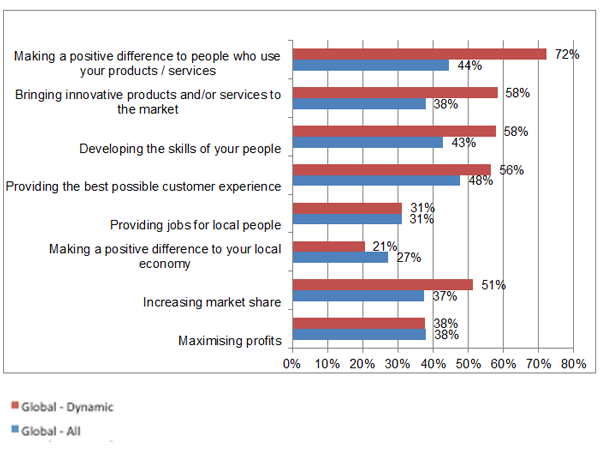-
Accounting Advisory
Our accounting advisory team help businesses meet their complex financial reporting requirements. The team can support in applying new financial reporting standards, IFRS/ US GAAP conversions, financial statement preparation, consolidation and more.
-
Payroll
Our team can handle your payroll processing needs to help you reduce cost and saves time so that you can focus on your core competencies
-
Managed accounting and bookkeeping
Outsourcing the financial reporting function is a growing trend among middle market and startup companies, as it provides a cost-effective way to improve the finance and accounting function. Our team can help with financial statement preparation, consolidation and technical on-call advisory.
-
Accounting Advisory
Our team helps companies keep up with changes to international and domestic financial reporting standards so that they have the right accounting policies and operating models to prevent unexpected surprises.
-
Crypto Accounting Advisory Service
Our team can help you explore appropriate accounting treatment for accounting for holdings in cryptocurrencies, issuance of cryptocurrencies and other crypto/blockchain related accounting issues.
-
ESG Reporting and Accounting
As part of our ESG and Sustainability Services, our team will work with you on various aspects of ESG accounting and ESG reporting so that your business can be pursue a sustainable future.
-
Expected Credit Loss
Our team of ECL modelling specialists combine help clients implement provisioning methodology and processes which are right for them.
-
Managed Accounting and Bookkeeping Services
Outsourcing the financial reporting function is a growing trend among middle market and startup companies, as it provides a cost-effective way to improve the finance and accounting function. Our team can help with financial statement preparation, consolidation and technical on-call advisory.
-
Business Tax Advisory
Our business tax team can help you navigate the international tax landscape, grow through mergers and acquisitions, or plan an exit strategy.
-
Corporate Finance
Our corporate finance team helps companies with capital raising, mergers and acquisitions, private equity, strategic joint ventures, special situations and more.
-
Financial Due Diligence
From exploring the strategic options available to businesses and shareholders through to advising and project managing the chosen solution, our team provide a truly integrated offering
-
Valuations
Our valuation specialists blend technical expertise with a pragmatic outlook to deliver support in financial reporting, transactions, restructuring, and disputes.

-
Business Tax Advisory
Our business tax team can help you navigate the international tax landscape, grow through mergers and acquisitions, or plan an exit strategy.
-
Corporate Tax Compliance
Our corporate tax teams prepare corporate tax files and ruling requests, support you with deferrals, accounting procedures and realise tax benefits.
-
Tax Governance
Our Tax Governance Services are designed to assist organisations in establishing effective tax governance practices, enabling them to navigate the intricate tax environment with confidence.
-
Goods and Services Tax
Our GST team supports organisations throughout the entire business life-cycle. We can help with GST registration, compliance, risk management, scheme renewals, transaction advisory and more.
-
Transfer Pricing
Our Transfer Pricing team advises clients on their transfer pricing matters on and end-to-end basis right from the designing of policies, to assistance with annual compliance and assistance with defense against the claims of competing tax authorities.
-
Employer Solutions
Our Employer Solutions team helps businesses remain compliant in Singapore as well as globally as a result of their employees' movements. From running local payroll, to implementing a global equity reward scheme or even advising on the structure of employees’ cross-border travel.
-
Private Client Services
Our private client services team provides a comprehensive cross section of advisory services to high net worth individuals and corporate executives, allowing such individuals to concentrate on their business interests.
-
Welfare and benefits
We believe that a thriving team is one where each individual feels valued, fulfilled, and empowered to achieve their best. Our welfare and benefits aim to care for your wellbeing both professionally and personally.
-
Career development
We want to help our people learn and grow in the right direction. We seek to provide each individual with the right opportunities and support to enable them to achieve their best.
An increasing number of commentators and researchers think there might be a link between purpose and growth. So what does a purpose look like, and how can you define yours?
You might think that Nike makes running shoes, Google runs a search engine and Patagonia produces outdoor clothing. To an extent, they do. But take one look at each firm’s brand promise and you'll notice something else.
'To bring inspiration and innovation to every athlete* in the world… *If you have a body, you are an athlete.' 'To organise the world’s information and make it universally accessible and useful.' 'Build the best product, cause no unnecessary harm, use business to inspire and implement solutions to the environmental crisis.'
Each company rejects mediocrity and promises something better. They have a goal that goes beyond the quest for profits and growth. They have a purpose.
This is, by no means, a new-fangled fad limited to glamorous technology and retail brands. Gränfors Bruk, a 113-year-old Sweden-based axe maker, hands out 20-year guarantees with its products. The company says that its high-quality, durable axes serve a three-pronged purpose: because there is no need to produce as many axes it uses fewer natural resources, it produces less waste and it does less, freeing up time for more important and enjoyable things.
As David Hieatt, author of Do Purpose: Why brands with a purpose do better and matter more, puts it: “They know why they are in business: to make axes that last. They want to change a society that thinks throwing away stuff is ok.”
Linking purpose and growth
The longevity of companies such as Gränfors Bruk and the profile of brands such as Nike, Google and Patagonia attest to the growing belief that there is a link between purpose and growth.
Recent findings from Grant Thornton’s International Business Report reveal that 70.5% of dynamic – or high-growth – companies across the world have a clearly defined non-financial purpose, versus 52.2% of all companies. Having a purpose is ‘very important’ to 44.1% of dynamic companies, compared to 40% of all companies.
Researchers also found that companies, and high-growth ones in particular, overwhelmingly prioritised non-financial over financial business objectives (see chart below).
Long-term business objective priorities (ranked 8-10 on scale of 1-10)

Purpose boosts performance
Having a purpose beyond profit can have a direct impact on employee behaviour too. When Reid Hoffman co-founded LinkedIn, his purpose was to “build a platform that creates economic opportunity for every member of the global workforce."
At every step in the company’s growth, that purpose served as what LinkedIn CEO Jeff Weiner describes as the firm’s “true north.”
“In job interviews, and then again in new hire orientations, we always emphasised our guiding value: individual LinkedIn members always come first,” Hoffman wrote in a recent LinkedIn post. “Any addition or change we make to the platform must improve it in ways that help individual members increase their economic opportunities.”
Imperative, a US consultancy, describes workers who identify with their employer’s purpose as ‘purpose-oriented’; that is, they prioritise meaning and fulfilment over money and status.
When Imperative recently surveyed 2,000 LinkedIn employees, it found that 41% could be described as ‘purpose-oriented’. But what is the benefit for LinkedIn? Hoffman wrote: “According to Imperative’s research, purpose-oriented employees are 54% more likely to stay at a company for five-plus years and 30% more likely to be high performers.”
Finding your North Star
When Wiener talks about a “true north,” Grant Thornton UK CEO Sacha Romanovitch understands where he’s coming from. As a global network of member firms, Grant Thornton’s purpose is to help dynamic organisations unlock their potential for growth. That is because we understand that these companies are the engines of the global economy.
At Grant Thornton UK, that purpose has evolved into shaping a vibrant economy because high-growth firms cannot thrive in a vacuum. “We know that businesses that outperform the market stand for something; they have a clarity of purpose,” Romanovitch recently told Grant Thornton UK’s Alumni Magazine.
“Ours is clear: to shape a vibrant economy where there is trust and integrity in markets; a business and social environment where business and people can thrive; and dynamic organisations unlocking their potential for growth. This informs who we work with, what we do for them, what we speak out on and how we are as a business. It’s our North Star.”
Grant Thornton UK’s ‘Vision 2020’ strategy is a road map towards helping the firm to demonstrate its purpose in everything it does and says. As part of that road map, it is currently in discussions with its people about adopting a shared enterprise model. Under the model all 4,500 employees would share their ideas about how the firm can demonstrate its purpose, share in the responsibility for living it and share in the resulting superior rewards.
“It’s important for people to have meaningful work, which allows them to connect what they’re doing on a day-to-day level with something that actually matters to them on a personal level,” says Romanovitch. “Shared enterprise is about creating an environment where everybody’s got that clarity of purpose and we’re just creating space for people to ask how, how, how.”
Defining your social purpose
So how can companies define their purpose? Hieatt believes that once a company identifies its enemy – be that bad design, bad service, too much pollution or anything else – eliminating that enemy becomes the company’s purpose. Beyond that, he advises simplicity, consistency and a drive to change the thing you hate.
That ongoing quest for change, says Hieatt, is the secret to why brands with a purpose succeed. People instinctively want to be part of change and will gather around ideas that promise to change things for the better, be that helping people to be healthy, helping them to find what they need faster, or giving them guilt-free enjoyment of the great outdoors.
Leaders of dynamic organisations that can identify the thing they want to change and articulate the reasons why could enjoy greater engagement and growth as employees and customers rally around this purpose beyond profit.
